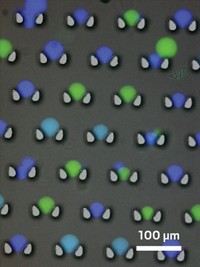Advertisement
Grab your lab coat. Let's get started
Welcome!
Welcome!
Create an account below to get 6 C&EN articles per month, receive newsletters and more - all free.
It seems this is your first time logging in online. Please enter the following information to continue.
As an ACS member you automatically get access to this site. All we need is few more details to create your reading experience.
Not you? Sign in with a different account.
Not you? Sign in with a different account.
ERROR 1
ERROR 1
ERROR 2
ERROR 2
ERROR 2
ERROR 2
ERROR 2
Password and Confirm password must match.
If you have an ACS member number, please enter it here so we can link this account to your membership. (optional)
ERROR 2
ACS values your privacy. By submitting your information, you are gaining access to C&EN and subscribing to our weekly newsletter. We use the information you provide to make your reading experience better, and we will never sell your data to third party members.
Diagnostics
Swallowable biosensor dispatches data from pigs’ bellies
Bioluminscent bacteria pair with electronics to detect blood in the gut
by Tien Nguyen
May 28, 2018
| A version of this story appeared in
Volume 96, Issue 22

Gut disorders are uniquely difficult for doctors to diagnose without turning to invasive procedures. To alleviate this issue, electronic pills that can snap photos or track temperature, pH, or gases have emerged. A multidisciplinary team of researchers at Massachusetts Institute of Technology has now debuted a biosensing capsule that goes beyond general measurement or mapping and can detect specific molecules (Science 2018, DOI: 10.1126/science.aas9315). The ingestible microbioelectronic device (IMBED) uses bioluminescent bacteria engineered to light up in the presence of heme molecules, which would be helpful for diagnosing gastrointestinal bleeding. Powered by a small button battery, a luminescence chip detects the emitted light and a microprocessor converts the light to an electrical signal. An antenna transmits the signal to a smartphone or laptop waiting to receive the data. After administering the pill to pigs given a solution of blood as well as pigs that weren’t, the researchers confirmed that the capsule could correctly detect blood inside the swines’ guts. The next goal is to shrink the capsule, which the authors say an individual could swallow at its current size if they were very motivated, by combining the separate chips onto a single integrated circuit.




Join the conversation
Contact the reporter
Submit a Letter to the Editor for publication
Engage with us on Twitter